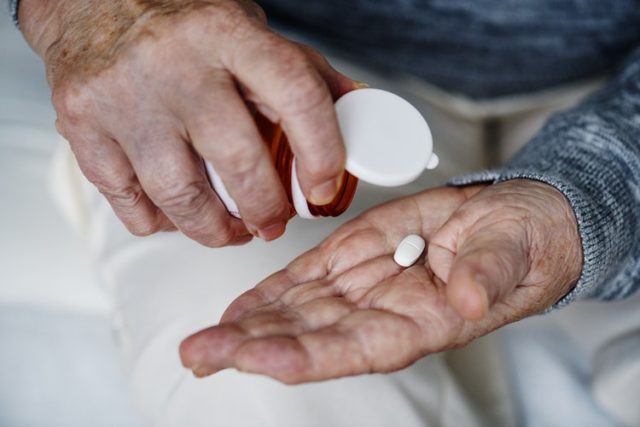A lot of people live their daily lives in severe pain. Most of them rely on strong painkillers to achieve comfort, even if it’s temporary. Unfortunately, being pain-free comes at a cost.
As soon as you stop taking those painkillers, you’ll experience their nasty side effects. Hot and cold spells, trouble sleeping, constipation, nausea, vomiting, and drowsiness- the list of side effects can be scary. It may feel like it’s a situation wherein you have to choose between going through pain or those side effects. This is where pure CBD can be life-changing.
This substance is gaining momentum in the world of health and wellness. Apart from relieving pain, it can also reduce depression and anxiety, alleviate symptoms associated with cancer, prevent diabetes, and aid in substance abuse treatment. It can even help keep your heart healthy and reduce the severity of your acne.
Sounds impressive, right?
The Start of CBD Use for Medical Purposes
CBD is the shorter term for cannabidiol.

Technically, it’s not cannabis or marijuana. It’s simply one of cannabis’ most prevalent active ingredients which doesn’t cause the same “high” you’d get from marijuana.
The first person to seriously consider and explore the therapeutic benefits of CBD was an organic chemist named Raphael Mechoulam. He became interested in it after learning about the use of cannabis as a treatment for seizure years ago. Particularly, it was the story of a poet who gave CBD to his son who was struggling with epilepsy during the 15th century.
While the tale could potentially be a fabricated one, Mechoulam started his research about CBD as a form of treatment for epilepsy with a group of people in Brazil. They started studying the substance’s effect on animals and they achieved positive results. With that, they felt motivated to actually start a small human trial.
That particular study involved 15 patients with epilepsy who were taking anti seizure medications and 8 more people who were asked to take about 200 to 300 milligrams of the CBD. Seven people, on the other hand, were given placebos.
The study lasted for more than four months and after such time, the participants who were given CBD had virtually no seizure throughout the trial period. The results were published, but received minimal attention.
CBD and Its Effects on Today’s Health Industry
Today, CBD receives lots of attention for its use on a wide variety of health problems. Its biggest impact is probably in the treatment of childhood epilepsy syndromes.
In several studies, CBD has been found to be effective in reducing the number of seizures. In some cases, it was effective enough to completely stop the condition. With that, FDA’s approval of the first medicine derived from cannabis wasn’t surprising.
CBD also offers an alternative treatment for people struggling with chronic pain and inflammation. It’s able to engage with the endocannabinoid system in human organs to effectively reduce systemic inflammation. This has a huge effect on health and medicine as inflammation happens in a lot of diseases.
Compared with most painkillers, CBD doesn’t create as many side effects. This is why most people who experience chronic pain choose to take CBD instead.
Cannabinoids have preventive properties as well, particularly when it comes to brain health. They possess neuroprotective properties which means that they can help maintain and even regulate your brain’s normal function.
You see, as your brain ages, the process of creating fresh and new neurons greatly slows down, contributing to a lot of degenerative diseases. By taking low doses of the CBD, as what a 2008 study found out, it’s possible to trigger the creation of new nerve cells and prevent degenerative diseases from happening.
About CBD’s Safety
When it comes to using CBD, you have to be extra careful about the products you buy. Since they are mainly marketed as a supplement, the FDA doesn’t regulate its safety or its purity.
With that, you can’t really know for sure if the product you are using really has the active ingredients at the stated dose on its label. Apart from that, there’s no way for you to know if the product has other ingredients or components.

Another thing you need to be careful with is the CBD’s interaction with certain drugs. One good example is Coumadin, a blood thinner. Taking CBD with this drug can put you at an increased risk of bleeding.
Other side effects of CBD you need to be aware of being:
- Irritability
- Fatigue
- Nausea
There’s no strict guide as to how much CBD you can take.
However, when taken in very high doses, you can experience a slight drop in your blood pressure and that can make you feel lightheaded.
Conclusion
While CBD promises tons of benefits, further research may still be necessary to prove that it can really help treat chronic pain, seizures, degenerative diseases, and other health problems. Also, since it’s not yet regulated, you have to be extra critical about what you are actually getting or using.
The CDC or Centers for Disease Control & Prevention happened to investigate a case of suspected poisoning involving 52 people who have taken supplements that “contain” CBD. 9 of the products they tested didn’t actually have CBD in them. Instead, what they found out was a synthetic cannabinoid which has been found to be fatal in Europe.
Sounds scary, right?
If you are seriously considering to make the CBD as part of your medical treatment, don’t hesitate to talk with your physician or healthcare provider- just to be sure that it won’t affect the rest of the medicine you are taking. Your doctor can also develop the right delivery method and dose for your case.
Not everyone reacts to CBD the same way. This makes it important for doctors and healthcare providers to create a more individualized approach to administering the substance.
The post How CBD Has Improved the Medical Industry appeared first on Dumb Little Man.
from
https://www.dumblittleman.com/cbd-in-medicine/

No comments:
Post a Comment